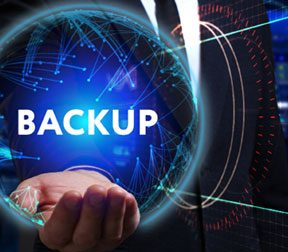Cloud-based and virtualization-specific backup options help overcome the limitations of traditional solutions.
 Data backup is arguably the most critical function in IT, but it continues to be a frustrating and problematic process for most organizations. Although backup products and technologies are continually evolving, industry surveys repeatedly reveal that organizations of all sizes are grappling with significant backup issues related to cost, complexity and reliability.
Data backup is arguably the most critical function in IT, but it continues to be a frustrating and problematic process for most organizations. Although backup products and technologies are continually evolving, industry surveys repeatedly reveal that organizations of all sizes are grappling with significant backup issues related to cost, complexity and reliability.
Too often, backup technologies and processes have not kept pace with growing data volumes, making it difficult to complete backups within the available window. Increased adoption of server virtualization has only exacerbated the problem.
“It’s a different world for IT managers today, and data backup … is more complex than ever,” said Eric Burgener, IDC research director. “Data sizes and types continue to evolve, as does the number of servers and operating systems each company uses. This leads to a host of new challenges IT managers face to make sure they can back up and protect their data and restore operations quickly.”
The Game Changer
Backup was a reasonably straightforward affair in the days when applications ran on dedicated servers. Once an application triggered a backup process, most of the server’s memory, storage and CPUs were available to the backup application. Server virtualization changed all that by allowing multiple virtual machines (VMs) to run on a single piece of hardware. Resource contention becomes a serious issue when an organization is simultaneously backing up multiple VMs.
The problem becomes exacerbated as the environment scales to more and more VMs sharing a common resource pool. With more VMs, there is more data to be backed up and backups need to be completed more frequently to meet business objectives. Legacy backup solutions place a significant burden on host servers and make it difficult to complete backups within the available window.
In a physical server environment, backup agents typically are installed on each machine to read data from disk and stream it to the backup server. This method does not work well in a virtualized environment — agents consume a lot of server resources, and back up even unchanged data file by file. Installing backup agents on every VM increases costs and management complexity.
Agentless solutions typically use snapshots to create image-level backups that make it easier to recover an entire VM. However, file-level recovery requires at least two steps. Administrators must go through the time-consuming process of extracting a full VM image to a local drive in order to restore individual files.
Purpose-Built Solutions
Best-of-breed backup solutions for virtualized environments offer file-level restore as well as replication capabilities, protecting VMs from both hardware failure and data corruption. These tools make it possible to recover individual items from any VM in a single step.
With VM replication, copies of mission-critical VMs are mirrored to a spare server and kept in their ready-to-start native format. This capability enables cost-effective disaster recovery and gives organizations greater confidence to virtualize mission-critical applications such as CRM, ERP and email systems. The ability to restore an entire VM from a backup file in minutes minimizes the risk of significant downtime. It is also possible to run a VM directly from a backup appliance should a failure occur.
De-duplication further improves backup efficiency. When backing up multiple VMs, de-duplication software stores only one instance of similar blocks, saving time and storage space. This is particularly valuable when backing up VMs created from a template, or VMs with significant free space on their logical drives.
The Cloud Option
Shifting data backup to a cloud provider can be a good option, particularly for smaller organizations. Cloud-based backup requires no capital investment for equipment and makes backup an operational cost. Software encrypts data for security purposes and automatically backs it up to remote servers. The service provider maintains and monitors the system, and because data is saved at a different location, it’s always accessible.
Restoring large amounts of data from the cloud can be time-consuming, however. Hybrid solutions help avert such performance issues by backing up data to an onsite appliance and then replicating to the cloud. Organizations can restore lost files quickly from the onsite device, yet gain the peace of mind that data is protected in the event of a major disaster.
Although data backup is critical, the process has become a significant pain point for most organizations. Virtualization and cloud services have fundamentally changed the process, making it nearly impossible to manage with traditional backup solutions. Virtualization-specific backup solutions with incorporated de-duplication and VM replication capabilities have become the gold standard — but there are other good options, depending on organization’s specific requirements. For a smaller organization with a modest data footprint, a hybrid cloud backup strategy can deliver compelling economic and management benefits.




You must be logged in to post a comment.